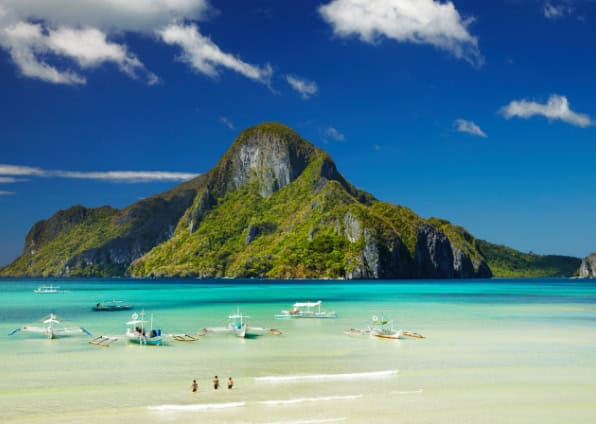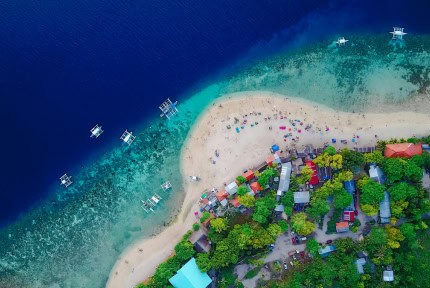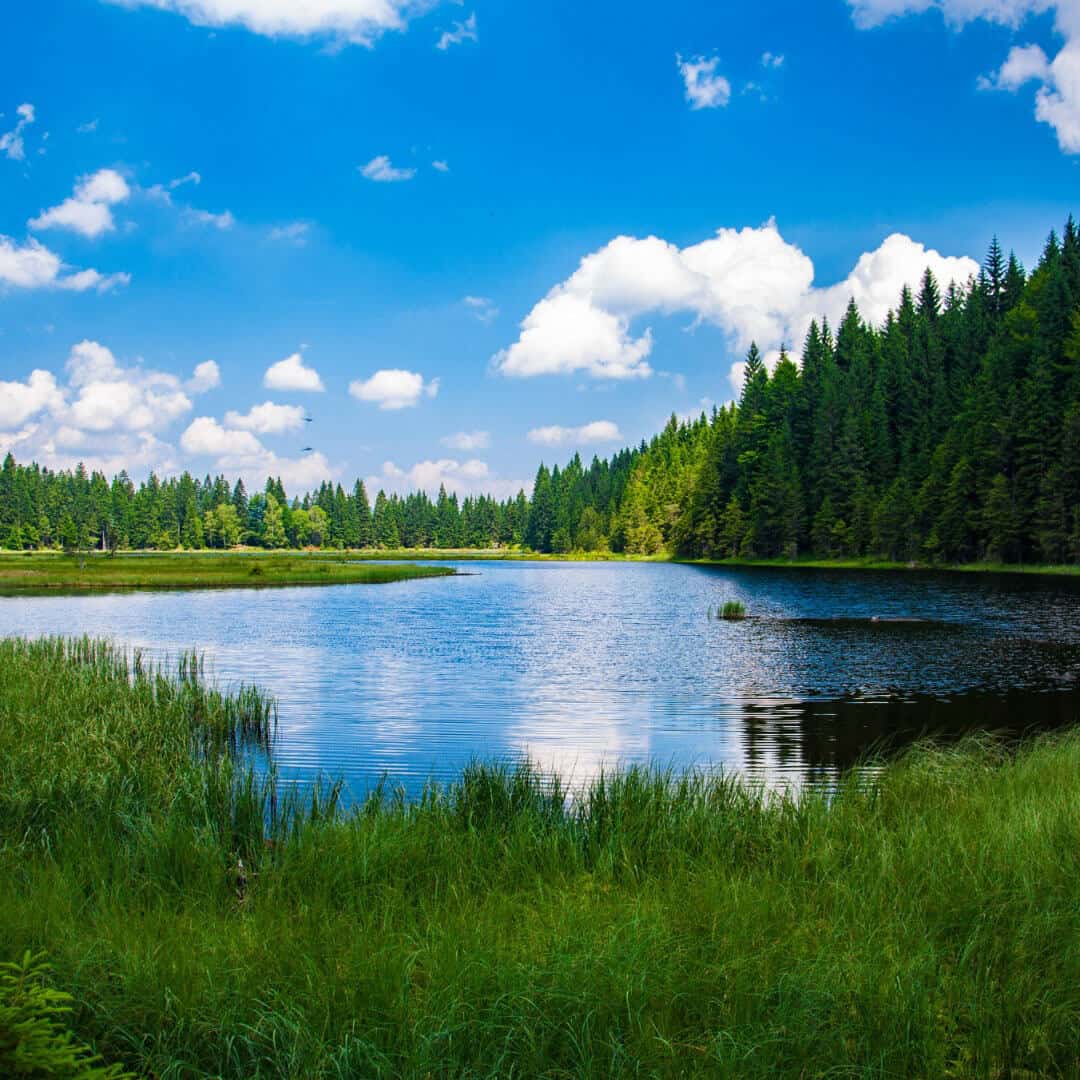

Philippines Travel Guide
If the idea of an island escape in Southeast Asia appeals to you, the Philippines is an ideal destination. Whether you visit for its stunning beaches, impressive coral reefs, lush tropical rainforests or unique cultural experiences, you can discover it all throughout this picturesque archipelago.
If you’re dreaming of an island escape to the Philippines, this handy travel guide is filled with useful tips and information to help you plan an unforgettable trip that will stay with you for a lifetime.
Best ways to experience the Philippines
Comprising of more than 7,600 islands, it’s easy for first-time visitors to the Philippines to feel a little overwhelmed when deciding what to include in their itinerary. To make the task a little easier, here are some favourite destinations and attractions throughout the Philippines that are well worth considering.
- Explore Manila – Manila will likely be your first port of call when visiting the Philippines, so it only makes sense to stay and explore a little while. Discover the historical district of Intramuros with its Spanish-era forts and churches, immerse yourself in the local culture by sampling Filipino cuisine in Binondo, the world’s oldest Chinatown, and indulge in the vibrant nightlife of Makati or Bonifacio Global City. A visit to the National Museum is also a must, as is enjoying the impressive sunset along Manila Bay.
- Soak up the sun in Boracay – If you love luxury beach resorts, Boracay needs to feature on your itinerary. It’s the perfect place to enjoy some water activities like snorkelling or paddle boarding, set out on an island-hopping adventure or simply sit back and indulge in the pristine white-sand beaches, crystal-clear waters and vibrant sunset views. Make sure you also immerse yourself in the lively atmosphere of Station 2, where beachfront restaurants, bars and shops offer a taste of the local culture.
- Take in the natural beauty of Palawan – With its dramatic limestone cliffs and turquoise waters, Palawan serves up a truly breath-taking landscape. Island-hop through the Bacuit Archipelago to explore hidden lagoons, pristine beaches and vibrant coral reefs. Palawan is also home to the Puerto Princesa Underground River, a UNESCO World Heritage Site where you can take a guided boat tour through the stunning subterranean river system.
- Experience Cebu – Boasting a vibrant mix of urban development, historical sites and natural beauty, Cebu City is a bustling metropolis that combines modern infrastructure with historical landmarks like Magellan’s Cross and the Basilica Minore del Santo Niño. Also home to beautiful natural attractions such as the picturesque Kawasan Falls and Osmena Peak with its panoramic mountain views, you’ll also enjoy its lively street markets, vibrant festivals and delicious local cuisine which reflects a blend of indigenous, Spanish and Chinese influences.
Visiting the Philippines
Climate
The Philippines has a tropical maritime climate characterised by high temperatures, humidity and distinct wet and dry seasons.
The dry season typically runs from November to April, bringing warm temperatures and clear skies. The wet season, from May to October, is marked by monsoon rains and the possibility of typhoons, particularly from June to September.
Average temperatures throughout the year range from 25 to 32 degrees Celsius, making it consistently warm, however, the country’s diverse topography including mountains and coastlines can result in localised variations in weather patterns.
Culture and language
Filipino (based on Tagalog) and English are the official languages of the Philippines.
Many Filipinos are multilingual, speaking their native dialects along with Filipino and English. English is widely used in urban areas and signs, menus and other important tourist information is often presented in English, making it quite easy for English-speakers to get by with minimal communication barriers.
The majority of Filipinos are Roman Catholic (as a legacy of over three centuries of Spanish colonisation), however, there are also significant Muslim and indigenous communities in certain regions of the Philippines.
Filipino culture is a blend of indigenous, Spanish and American influences. The people are known for their hospitality, warmth and strong family ties. The Philippines has a rich cultural heritage, with traditional music, dance and festivals.
Filipino cuisine is diverse and reflects a mix of influences. Popular dishes include adobo (marinated meat), sinigang (sour soup) and lechon (roast pig). Rice is also a staple in Filipino meals.
The Philippines has strict anti-drug laws and the penalties for drug-related offenses can be severe, including long prison sentences or even the death penalty. It may also be helpful to know that smoking is prohibited in enclosed public spaces and public transportation and it’s illegal to take photos of official buildings for publication.
Getting around
Getting around in the Philippines is generally convenient, but the ease of transportation can vary depending on the specific location.
In major cities like Manila and Cebu City, transportation options include taxis, ride-sharing services and public transportation such as buses and jeepneys. Traffic congestion can be a challenge in urban areas.
When travelling between islands, domestic flights can be a good option or there is also an extensive ferry network. You’ll also find tricycles and motorcycles are common modes of transport in more rural or remote areas.
Accommodation
You’ll have a variety of accommodation options to choose from in the Philippines including hotels, resorts, private rentals, guesthouses and hostels. In more remote or less touristy areas, you may also find inns and pensions which provide basic accommodation options, usually at a lower cost.
The cost of accommodation in the Philippines can vary depending on factors such as location, time of travel, type of accommodation and the level of amenities provided, so do some research to find the most suitable option for you.
Entry requirements
Provided you meet all requirements, Australians are permitted entry to the Philippines without a visa for a period of up to 30 days.
It’s always a good idea to visit the Australian government’s Smartraveller website or contact your nearest Philippine embassy or consulate before your trip for the latest information and updates about travelling to the Philippines.
All benefits and covers are subject to the terms, conditions, limitations and exclusions listed in the Combined Financial Services Guide and Product Disclosure Statement (PDS) and on other policy documentation, including the schedule.
Philippines travel insurance FAQs
It’s always a good idea to get travel insurance when travelling to the Philippines, so you know you’re prepared if something doesn’t go to plan. From medical emergencies to lost luggage, travel insurance can come in handy in a variety of situations. Choosing cover that also offers instant claims can also be invaluable while travelling abroad.
The best way to find out how much it will cost to get cover to travel to the Philippines is to get an instant quote with PassportCard. It only takes a couple of minutes to get a personalised quote by providing some basic details such as your age, destination/s, travel dates and the level of cover you would like.
No. Many Australians don’t realise that they won’t be covered by Medicare when overseas. Purchasing travel insurance with cover for medical emergencies and evacuation is essential to ensure you won’t be left to foot the bill if you become seriously sick or injured while travelling.
Not automatically. If you’re planning on doing any activities like cascading, deep sea fishing, mountain biking, mud buggying, paragliding, quad bike riding, outdoor rock climbing, segway tours or sky diving, you’ll need to add Optional & Adventure cover for these activities when you purchase your travel insurance to make sure you’ll be covered.
Simply call our Global Assistance team on +61 1800 490 478 or contact us on WhatsApp. Our Australian-based Global Assistance team is available 24/7 and can quickly handle most common claims on-the-spot over the phone.
Preparing for your trip to the Philippines
All set for your trip to the Philippines?
Here are some helpful tips to ensure your trip is as enjoyable as possible:
- Check your passport is valid with at least 6 months of validity left from the date you plan to depart the Philippines
- Ensure you meet the visitor entry requirements for the Philippines
- Speak to your doctor to check if you’ll need any vaccinations. Most doctors will recommend vaccination against hepatitis A and typhoid in addition to the routine vaccinations before travelling to the Philippines
- Notify your financial institution of your plans to travel
- Arrange a travel currency card or another method of payment to cover expenses while you’re away. It’s also a good idea to take some Philippine Peso (PHP) with you as some places may only accept cash payments
- Contact your phone provider to ensure your phone plan will cover you while you’re away or purchase a pre-paid international sim card
- Arrange your accommodation in advance for each location you plan to stay in
- Consider booking any trips, tours or activities you want to do in advance, particularly if you will be visiting during peak tourism seasons when things can get quite busy
- Provide details of your travel plans to a family member or close friend not travelling with you so you can be contacted in case of an emergency
- Save the details of how to access emergency consular assistance in case you need it
- Organise your travel insurance with PassportCard.











